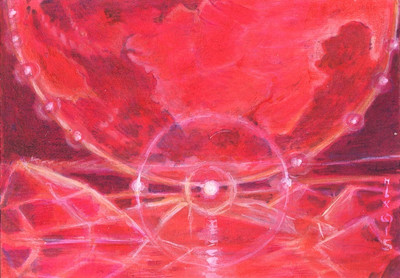HOME | DD
 LEXLOTHOR — Occultation Event
LEXLOTHOR — Occultation Event

#sequoia #planetaryastonomy #eclipse #exoplanet #planets #sedona
Published: 2015-09-16 23:04:30 +0000 UTC; Views: 659; Favourites: 21; Downloads: 7
Redirect to original
Description
Further explorations into the unknown can be seen in my DA "Space Art" gallery:lexlothor.deviantart.com/galle…
Here I return to the richest planetary system in the Milky Way Galaxy.
This is a view of my hypothetical exoplanet Sedona as seen from its twin world Sequoia. Both are habitiable Earth-like worlds of lesser mass than Terra. These planets share a common orbit about their sun at the L5 trojan point of a gas giant in the habitable zone.
They are in tidal lock with each other. They orbit around a common barycenter. Each planet always keeps the same face pointed at the other. Their mutual motion is inclined slightly to the plane of the ecliptic. As a result they have mutual eclipsing events. Each type is spaced half a year apart. Most of these eclipses are grazing events in which the penumbra of one world crosses only a portion of the other. As sunlight is filtered through the atmosphere of one, it passes only red light around its limb to the other. This bathes whole latitudes in red light for several hours during the eclipse seasons.
In this case we see the northern polar cap of Sequoia in the penumbra of the shadow of Sedona. This only happens when both worlds are experiencing northern hemispheric winter.
This image revisits the multiple planet system previously posted as "Trojan Earths":
[link]
art & text (c) John P. Alexander
2.5" x 3.5" art card rendered in Prismacolor pencil, Tombow markers & acrylic paints.
Related content
Comments: 1

Now that's some cool collection of planet spaced out in a way that I never though could work in a logical context.
👍: 0 ⏩: 0


























